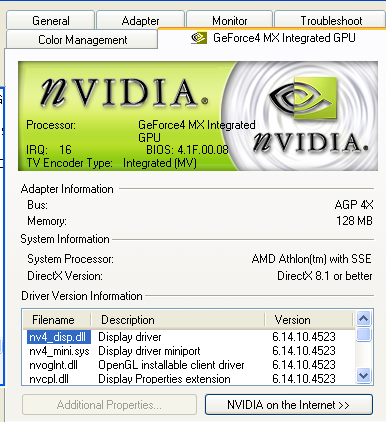System setups, notes and O/C
Here's a quick rundown of the test system should you wish to compare benchmark results with your own.- AMD Barton XP2500+ (1833MHz / 11 x 166MHz FSB)
- Soltek SL-B7A-F mini barebones unit (nForce2 IGP + MCP-T SB)
- EPoX 8RDA3G nForce2 Ultra 400 for the XP3200+ Barton
Other components
- ATi Radeon 9
Software
- Windows XP Professional
Notes
The Soltek EQ3702M will be directly compared to a class-leading nForce2 board in the EPoX 8RDA4G. Whilst it's capable and certified to run at 200FSB for the latest XP Barton, it, obviously, has no problem running at 166MHz FSB. The Soltek mini barebones will be run with a discrete ATi Radeon 9800 PRO and with the on-board GeForce4 MX graphics. The GeForce4 MX's benchmarks will be limited to the gaming section. As standard. the integrated GeForce4 MX falls in just below the discrete GF4 MX440 card. The integrated part sports a 200MHz core clock speed and memory at the host North Bridge's speed, which in this case is 333MHz (DDR). 2 rendering pipelines and 2 textures units afford it a peak fillrate of 800 MegaTexels /s and 2.7GB/s of shared bandwidth. It's limited to DX7 compliance, so don't expect 3DMark 2003 to run smoothly.

128MB
of system memory was allocated to the integrated graphics. The 45.23
drivers were used for benchmarking. nView, NVIDIA's dual display
application, was a joy to use. The GeForce4 MX produced surprisingly
decent 2D on a flat-faced Dell monitor. It was difficult to tell it and
the Radeon 9800 PRO's image apart at 1024x768x32 @ 100MHz, The Radeon was
subjectively better at 1600x1200 @ 75Hz, though. On-board graphics have
been usually an afterthought on a number of motherboards, but NVIDIA's solution
is robust in most respects. It's definitely not been tacked on for the hell of
it. There's considerable value and usefulness attached.
TV
output was crisp, clear and detailed, and we'd have no qualms about using
the Soltek as a standalone DivX or DVD box in the living room. Note that
one cannot run the second VGA-Out and TV-Out concurrently. Either has to be
sacrificied via the manipulation of an on-board jumper. TV-Out is disabled by
default. A S/PDIF-Out
plug would have been handy for multimedia use, thereby making the most of
NVIDIA's APU. The sound exhibited by the EQ3702M was pleasing through a
pair of studio-class Sony headphones. Whilst we'd take a M-Audio Revolution or
Creative Audigy2 over it, most users will be pleased with the sound quality
through midrange speakers.
Overclocking
We've
previously seen that nForce2-equipped motherboards, running at a maximum
ratified 166MHz FSB, often don't hit 200MHz FSB with great stability. Some do,
some don't. Chipset voltage was raised to 1.8v, the multiplier dropped to 10x,
and the FSB raised by 5MHz at a time. The Soltek would boot in at 200MHz FSB,
but it wouldn't complete any benchmarks, especially gaming runs. 190MHz FSB
appeared to be semi-stable, and it would only crash occasionally. We settled on
185MHz FSB as a rock-solid, overclocked FSB speed. A Barton XP3200+, therefore,
won't run at its nominal speed in this sample.
Both boards ran the test Barton XP2500+ at 1837.7MHz / 167.1MHz FSB.









